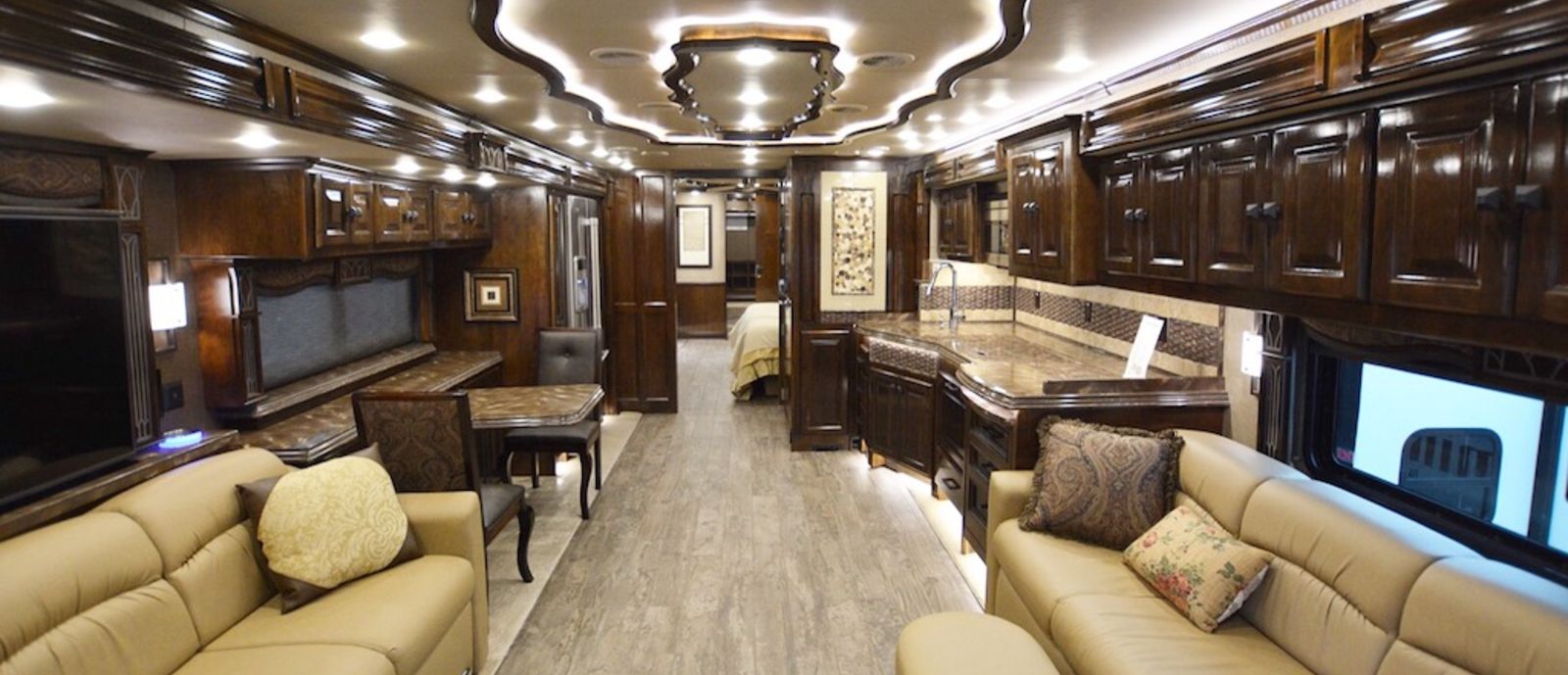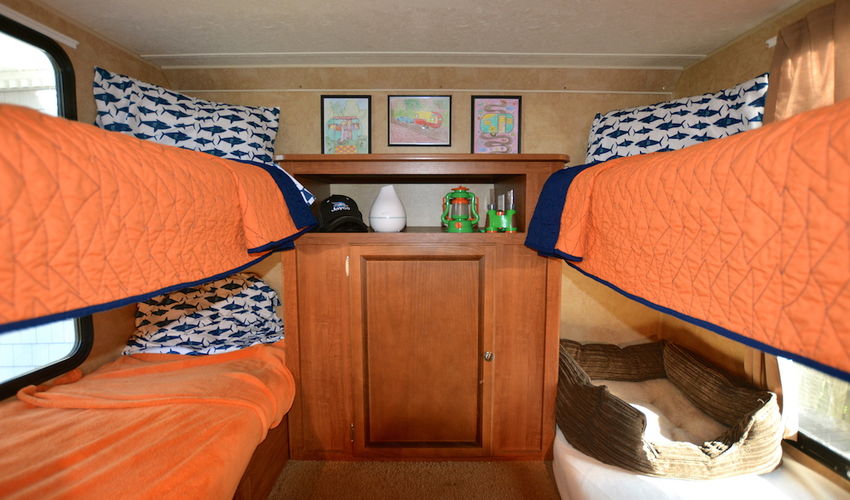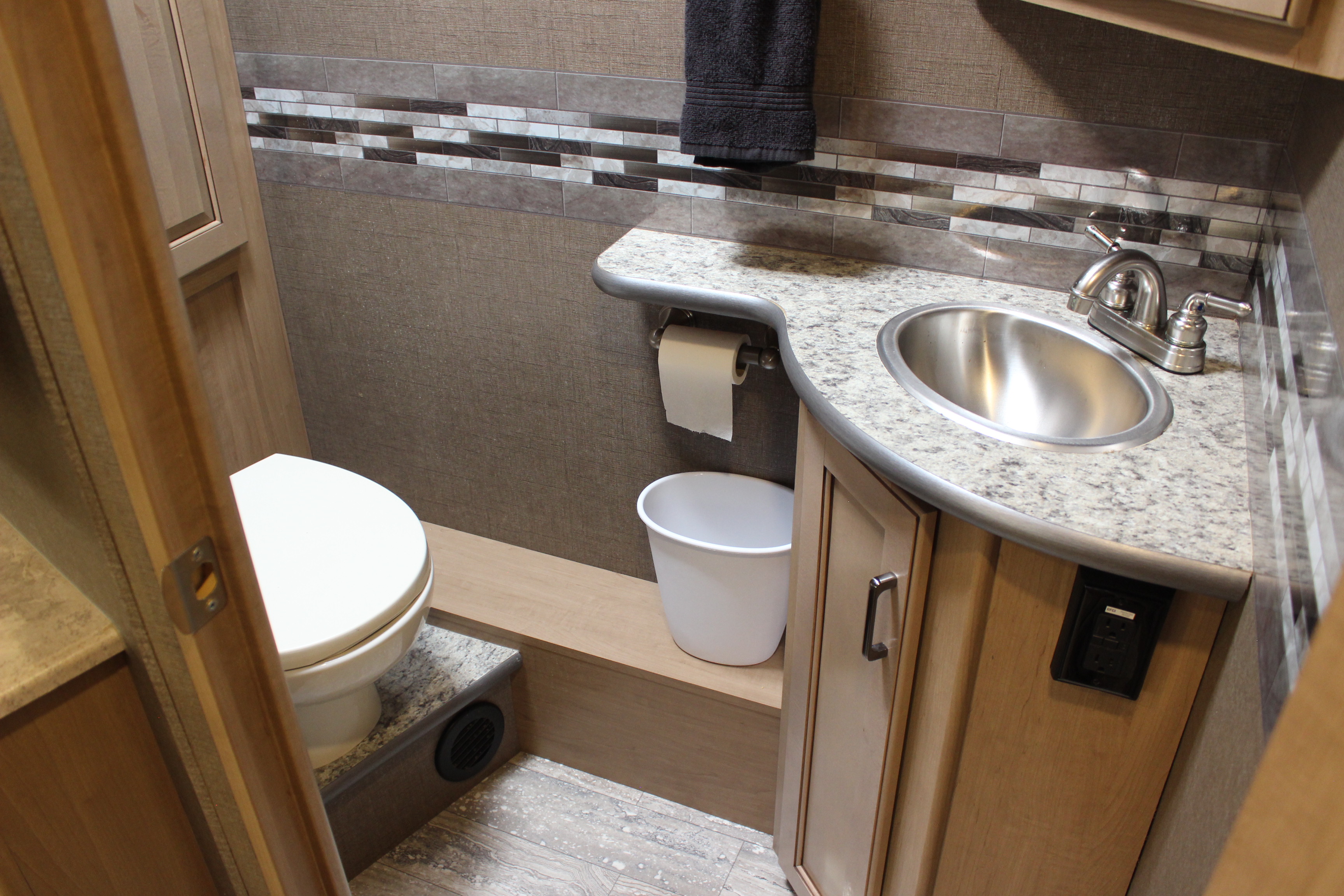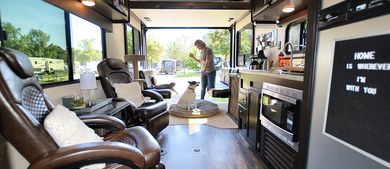After you decide what RV type you’re going to purchase, you need to pick your RV’s size and floor plan. There are thousands of options on the market, but we’re here to share our top 10 tips for finding your perfect RV model (and make sure you consider all of the small things) for an enjoyable RV camping experience. So be sure to take this list of considerations with you when you head to the RV dealership or browse models at an RV show.

Expert Advice
10 Expert Tips for Finding Your RV Model and Floor Plan
If you’re a first-time RV shopper, you might be surprised — and a little overwhelmed — at how many options there are out there. Once you settle on your desired RV type, the next step is to decide on a suitable size and floor plan.
1. Know Your Numbers.
If you’re purchasing a towable, research your tow and payload capacity — don’t take guesses or rely on social media for this information. Use your VIN to get the specs directly from your vehicle manufacturer. If you’re buying a motorhome, double and triple-check the weight of any vehicle that you’re planning to tow behind the RV. These are the first specs you should look at when shopping. Believe us, picking out an RV that doesn’t work with your current vehicle situation can be expensive and unsafe.

RELATED: Beginner's Guide to Hitching, Driving, and Towing an RV
2. Decide On The Necessary Number Of Beds
We highly recommend looking for RV floor plans that provide a dedicated bed for anyone who will be sleeping in the rig most of the time. When shopping for your first RV, some people think it’s no big deal to make up the dinette or pull out the sleeper sofa every night. We know from experience that this can be a frustration in the long run.
Solo campers or couples who need just one bed will find tons of great options across every RV type. Families with one or two children will be happy to find bunk models in travel trailers and motorhomes. If you’re traveling with more than two children, travel trailers and fifth wheels offer many bunkhouse floorplans with three to four beds in a separate sleeping area.

If you’re looking for a small towable that still offers dedicated beds for everyone in the family, check out Murphy bed floor plan options. This trend is popular among RVers, so there’s plenty of this RV floor plan type out there.
3. Pick Your Bath Type (Wet, Dry, or None)
Some RV shoppers love the idea of having a large, private bathroom no matter where they travel. Others are fine with the idea of using campground comfort stations. This is a pretty important part of the RV experience, so make sure you get what you want in this department.

Many smaller RV options like Class Bs, small travel trailers, and truck campers only offer wet baths, which are bathrooms where there isn’t a separate stall for the shower. Think hard about whether this will be a deal breaker for you.
4. Know When (And How) You'll Be Camping
A trend in the RV industry is that more models offer four season features like insulated walls and underbellies. If you want to camp year-round, or at least in the cooler shoulder seasons, look for RVs that include these options.

And if you’re looking to boondock (dispersed camping in locations without hookups), make sure to search for RVs with larger fresh, gray, and black water tanks. Other attractive features for folks looking to get off the grid are on-board generators and solar prep.
5. Think About Your Camping Style
There’s no right way to camp. Some people shop for an RV with a clean bathroom and comfortable beds that will keep them warm and cozy at night. Other campers seek a smaller version of their sticks and bricks house, with all the creature comforts of home. Will everyone be able to eat a meal, play a board game, or watch a movie? Think about how you want to live in the RV and make sure that the floor plan supports your lifestyle.

6. Consider Your Cooking Habits
Some campers use their RV kitchens frequently, while others have never even turned on their RV oven. If an RV kitchen is a major draw for you, look closely at storage, counter space, and refrigerator size. If you love to cook in the open air, check out the amazing outdoor kitchen options. However, if you don’t cook a lot while RVing, skip the outdoor kitchen to get more interior space and storage.

7. Think About Working Remotely
The ability to work remotely leads a lot of people to check out the RV lifestyle. If you’re planning to work on the road, make sure you choose a floor plan with a spot for you to comfortably set up shop. Many people are using the flexible space in toy haulers to set up mobile offices. Another popular option right now are fifth wheel models with an office space in the middle.
8. Consider Storage
Storage varies drastically in different models and floor plans, so think specifically about the things you want to have with you when you’re camping and traveling on the road. From the big stuff like bikes, kayaks, and golf carts, to the little stuff like clothes, linens and towels, food, and kitchen supplies, try to picture where and how everything can be stored.
RELATED: 6 Packing (and Unpacking) Tips for RV Vacations
9. Understand What's Accessible During Travel
One of the greatest benefits of RV travel for our family is being able to use the bathroom and have a healthy lunch in our RV kitchen while at rest stops. If this is also important to you, make sure you can access everything you need, even with the slides in. Can you access the bathroom, open the refrigerator, and get into the bedroom? Don’t be embarrassed to ask the salesperson to bring in the slides for you to double check.
RELATED: The First-Timer's Guide to Organizing Your RV Road Trip

10. Think About Important Features
Every RV is a bit different than the next, and some options will be more important to you than others. That’s why it’s important to have a list of “must haves” vs. “nice to haves” before you start your RV buying process.
Here are a few features that may or may not be on your list depending on your RV lifestyle:
- Large awning
- Exterior bathroom entrance
- Outdoor shower
- Power and automated systems for stability jacks, a tongue jack, and levelers
- Smart technology and outdoor entertainment
Take your time and have fun with this part of the RV shopping experience. There are so many great RVs out there, so make sure to find the perfect one for you.










